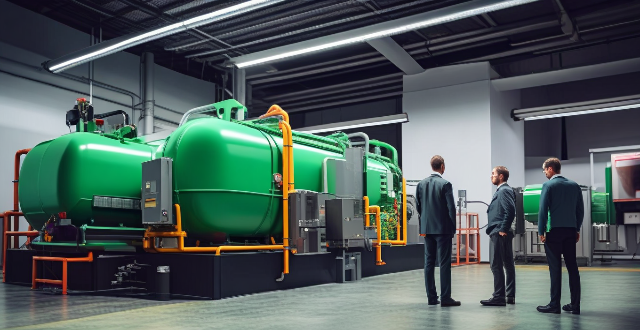Carbon capture, a technology to reduce CO2 emissions from industrial processes and power generation facilities, comprises three main types: post-combustion, oxy-fuel combustion, and pre-combustion. Each method captures CO2 differently, and the captured gas can be stored or used for other purposes. Carbon capture offers benefits such as reducing greenhouse gas emissions and supporting the transition to a low-carbon economy but faces challenges like high costs and energy requirements.

Carbon Capture and Its Working Mechanism
Carbon capture, also known as carbon sequestration or carbon capture and storage (CCS), is a technology that captures carbon dioxide (CO2) emissions produced by various industrial processes and power generation facilities. The primary goal of this technology is to reduce the amount of CO2 released into the atmosphere, which contributes to global warming and climate change.
There are three main types of carbon capture technologies: post-combustion, oxy-fuel combustion, and pre-combustion. Each of these methods works differently in capturing CO2 from industrial processes.
Post-Combustion Carbon Capture
In post-combustion carbon capture, CO2 is captured after the combustion process has taken place. This method involves passing the exhaust gases through an absorber, where they come into contact with a solvent that binds with the CO2. The CO2-rich solvent is then heated to release the pure CO2, which can be compressed and transported for storage or further use.
Oxy-Fuel Combustion
Oxy-fuel combustion involves burning fuel in pure oxygen instead of air. This process produces a stream of flue gas consisting mainly of CO2 and water vapor. The water vapor can be condensed, leaving behind a nearly pure stream of CO2 that can be easily captured and stored.
Pre-Combustion Carbon Capture
Pre-combustion carbon capture involves converting the fuel into a hydrogen-rich gas before it is burned. This process produces a stream of CO2 mixed with other gases, which can be separated using chemical absorption techniques similar to those used in post-combustion carbon capture.
Once the CO2 has been captured, it can be transported to a suitable storage site or used for other purposes such as enhanced oil recovery or carbon sequestration in plants.
Benefits of Carbon Capture
Carbon capture technology offers several benefits, including:
- Reducing greenhouse gas emissions and mitigating the effects of climate change.
- Enhancing energy security by enabling continued use of fossil fuels while reducing their environmental impact.
- Providing opportunities for economic growth through the development of new industries and job creation.
- Supporting the transition to a low-carbon economy by providing a bridge between current energy sources and future renewable energy systems.
However, there are also challenges associated with carbon capture, such as high costs, energy requirements, and technical limitations. Nevertheless, ongoing research and development efforts aim to address these challenges and make carbon capture a more viable solution for reducing greenhouse gas emissions.